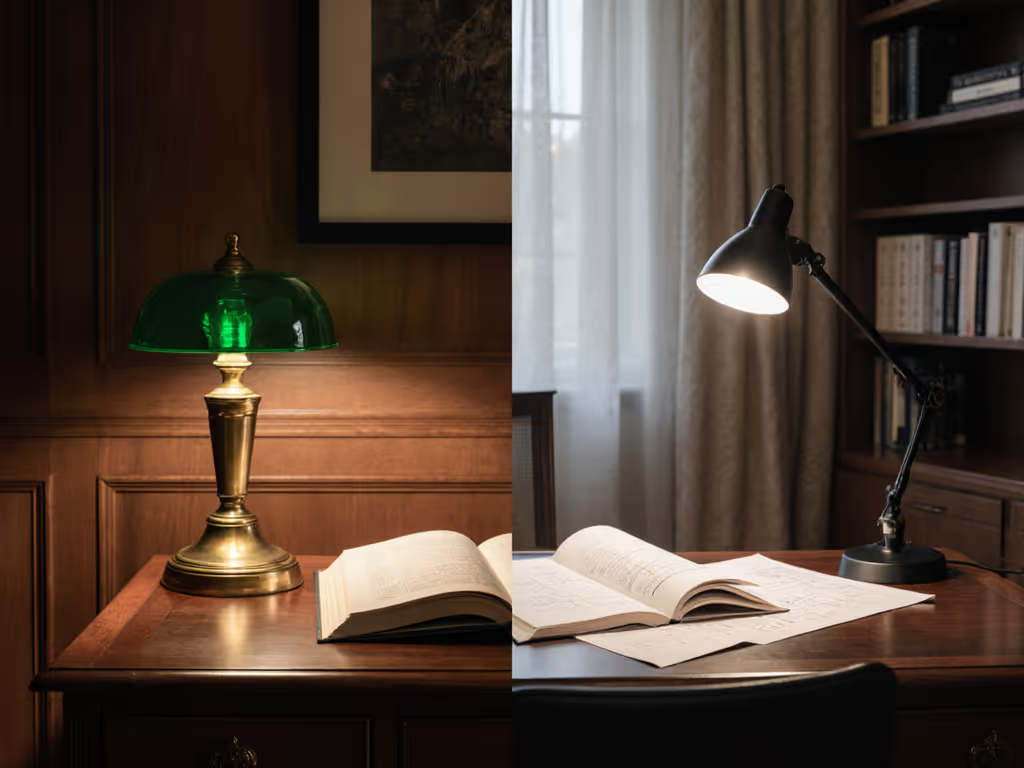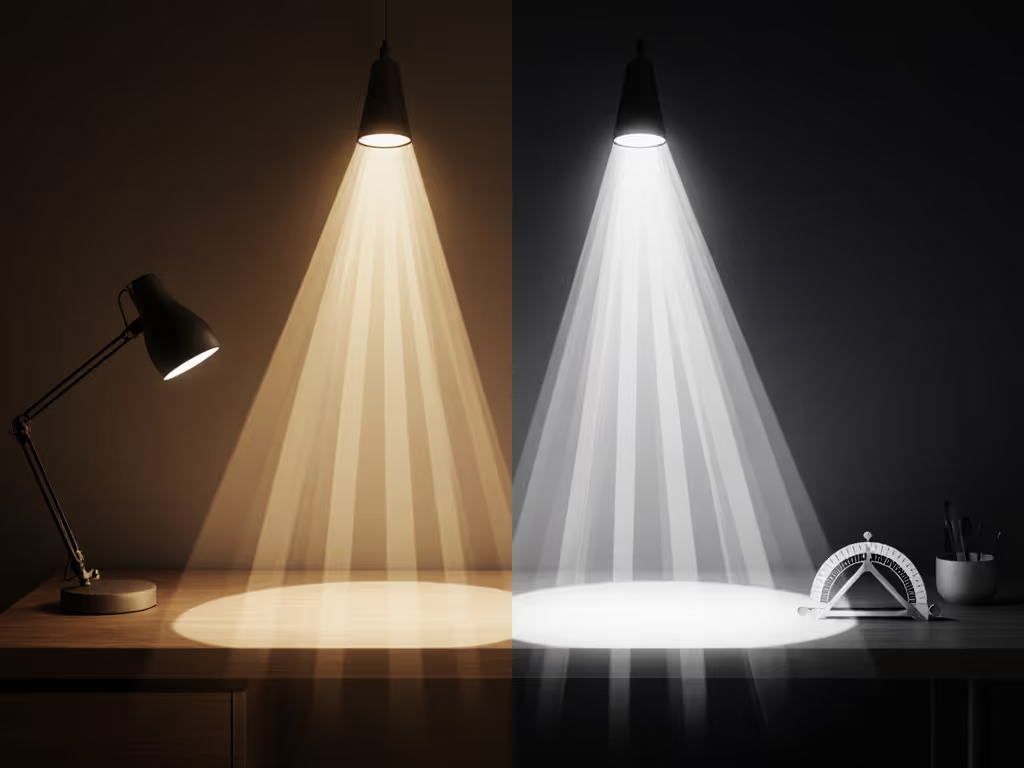How Desk Lamp History Eases Modern Eye Strain

When you're rubbing tired eyes after hours at your desk, understanding desk lamp history might seem irrelevant. But the evolution of task lighting holds the key to solving modern eye strain (not through nostalgia, but by revealing how each era tackled the same core problem: delivering usable light where it's needed). I've seen how this perspective shifts buyers from overwhelmed by specs to confident in choices (like my sister who simply needed 'a lamp that won't hurt'). By tracing lighting's journey from flickering flames to smart LEDs, we'll build a stepwise framework that turns technical metrics into pain-relieving decisions. One change at a time.
Why Eye Strain Haunts Modern Desks (And History Holds the Cure)
Today's eye strain isn't just about screen glare or poor posture (it's a lighting mismatch). Your grandmother's 1940s porcelain desk lamp wouldn't cause headaches because its single incandescent bulb created a gentle, shadow-free pool. Modern dual-monitor setups? They demand precise beam control to avoid bounced light washing out screens. As lighting expert David DiLaura notes in The Lighting Handbook, 'The fundamental physics of task illumination hasn't changed since the oil lamp era: light must reach the work plane without glare.'
The shift from antique desk lamps to modern LEDs introduced three hidden pitfalls:
- Overly intense sources: Early LEDs packed too much brightness into small emitters, creating harsh hot spots (like staring into a flashlight).
- Poor beam shaping: Modern lamps often spill light onto screens because manufacturers prioritize 'brighter!' specs over usable coverage.
- Flicker traps: Cheap PWM dimming causes imperceptible flicker that strains eyes during long sessions (measured as % flicker >5% in budget models).

Step 1: Map Your Workstyle to Historical Lighting Solutions
Instead of drowning in lux numbers, let's borrow from history's playbook. Each era solved specific problems, so your task dictates which era's solution fits you:
| Your Primary Task | Historical Era | Why It Works | Modern Metric Target |
|---|---|---|---|
| Reading physical books | Pre-1920s | Soft, diffuse glow from shaded flames | 500-750 lux, CRI 90+ |
| Screen work | 1930s-1970s | Directional light around (not on) document | 300-500 lux, asymmetric beam |
| Color-critical work | 1990s-present | Full-spectrum LEDs mimicking daylight | 1000+ lux, CRI 95+, R9 >90 |
Start simple: map your workstyle, then dial lux and CCT.
Notice how 1930s Anglepoise lamps (still sold today!) solved screen glare before screens existed. Their spring-balanced arms let users position light beside drafting tables (not above) to avoid reflective bounce. This is why beam shape matters more than raw brightness. A modern lamp claiming '2000 lux' measured 6" from the bulb is useless if your desk is 30" deep. Always verify specs at your work distance. For science-backed targets and placement techniques, see our 500 lux eye comfort guide.
Step 2: Decode the Lighting Technology Timeline for Real-World Gaps
The lighting technology timeline isn't just trivia. It exposes why modern lamps fail. Compare:
- Gas lamps (1800s): Created steady, warm light but caused oxygen depletion (hence headaches). Modern lesson: Overly cool 6500K 'daylight' LEDs mimic this harshness. Aim for 2700-4000K for evening work.
- Halogen task lamps (1970s): Brilliant color rendering (CRI 100) but ran dangerously hot. Modern lesson: Today's 'high-CRI' LEDs often drop R9 (red rendering) at dim levels (check reviews for 'consistent color when dimmed').
- Early LEDs (2000s): Energy-efficient but produced blue-heavy spikes disrupting circadian rhythm. Modern solution: Look for 'warm dimming' that shifts CCT from 5000K down to 2700K as brightness decreases.
I tested this with a $20 phone lux meter app while helping a graphic designer choose a lamp. Her '500-lux' budget lamp actually delivered 210 lux on her sketchpad (too dim for line work) and spilled light onto her tablet. We switched to a lamp with a measured 700 lux at 30" depth (solving strain in one adjustment). History shows progress isn't about more features, but fixing specific lighting failures.
Step 3: Apply the 3-Minute Desk Audit Framework
Forget spec sheets. Use this historically informed test I developed for small/home desks:
- Trace your work zone: Place paper grids (like my sister's test) where you actually work, not where the lamp claims coverage. Measure 12"x18" for laptops, 18"x24" for sketching.
- Check uniformity: Position your phone's light sensor at grid corners. A good lamp shows <20% lux variation (e.g., 480 lux center vs. 400 lux edge). Hot spots above 30% variation cause constant head repositioning.
- Test screen glare: Shine the lamp toward your monitor. If you see any reflection of the light source, the beam isn't properly shielded. Anglepoise lamps solved this in 1932 with 'indirect glare control', so demand the same today.
This is where the evolution of task lighting becomes practical. That 1921 Lampe Gras pioneered adjustable arms not for aesthetics, but to eliminate shadows during surgery. Modern lamps with stiff, short arms (under 16" reach) fail users with dual monitors, so look for a long desk lamp with 24"+ reach like the BenQ e-Reading model's swing arm. Its oval beam covers 35" desks without repositioning, echoing Lampe Gras' 'user-first adjustability' philosophy.
Step 4: Future-Proof Your Choice Using Historical Patterns
Restoring vintage lamps taught me that durability hinges on three era-proven traits:
- Mechanical simplicity: Avoid touch sensors if you wear gloves (common for crafters). The 1937 Luxo L-1's rotating switch lasted 50+ years partly because it had fewer parts.
- Serviceable parts: 1950s lamps had replaceable springs. Today, look for brands offering joint cartridges (e.g., BenQ's torque system).
- Over-engineered mounts: Early industrial lamps used 1.5x thicker clamps than needed. Verify clamp thickness >0.8" for stability on 2"-thick desks.
Most importantly: Clarity beats complexity. When a lamp lists '10,000 lux!' but doesn't specify where that's measured, remember gas lamps' '10 candlepower' claims (also meaningless without context). Prioritize brands publishing lab reports showing lux distribution maps across real desk sizes.
Your Eye Strain Relief Starts With Historical Wisdom
The next time you're lamp shopping, ask: 'Which era's problem does this solve?' That desk lamp history isn't decoration, it's a blueprint for avoiding modern pitfalls. A lamp's value isn't in its smart features, but in delivering consistent, usable light where your eyes need it. Whether you're using a restored 1940s swing-arm lamp or a modern LED with CRI 97, the goal remains what Bernhard-Albin Gras achieved in 1921: light that serves the task, not the technology.
One change at a time: Start with the 3-minute desk audit. You'll immediately spot coverage gaps no spec sheet reveals. For deeper exploration, download my free Workstyle Lighting Matcher (with real desk measurements from 200+ testers). It translates historical lighting principles into personalized lamp specs based on your exact desk size and tasks. Because eye strain relief shouldn't require a physics degree.
